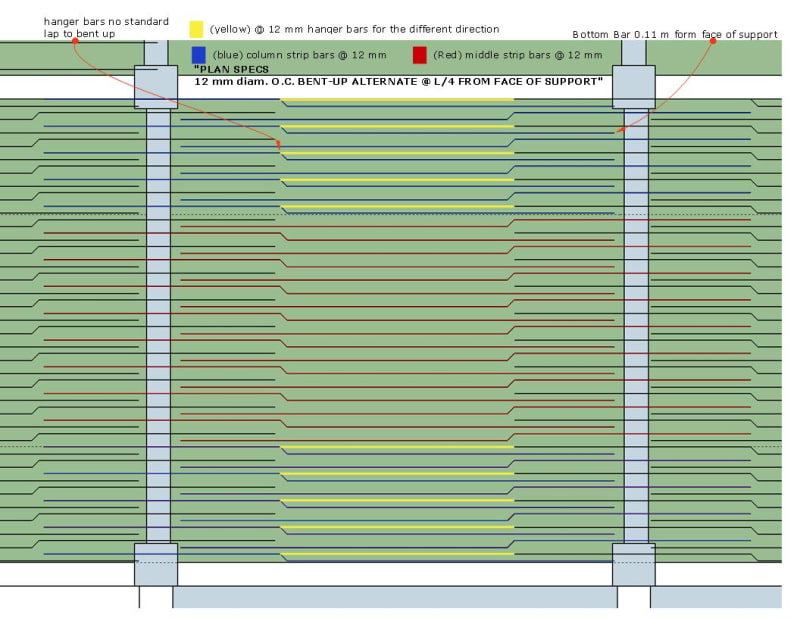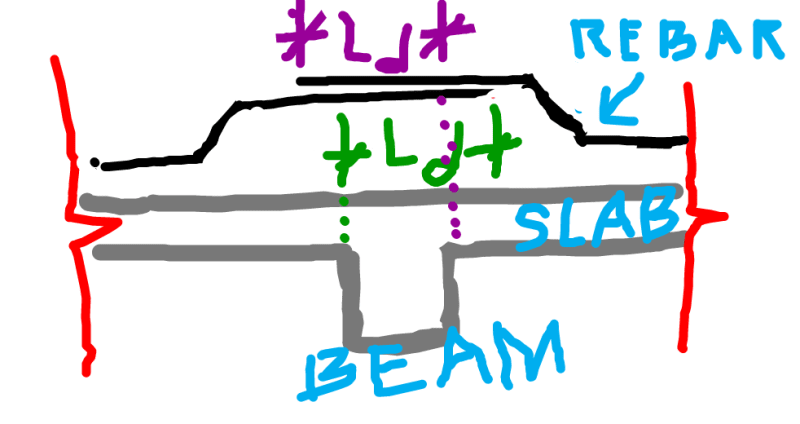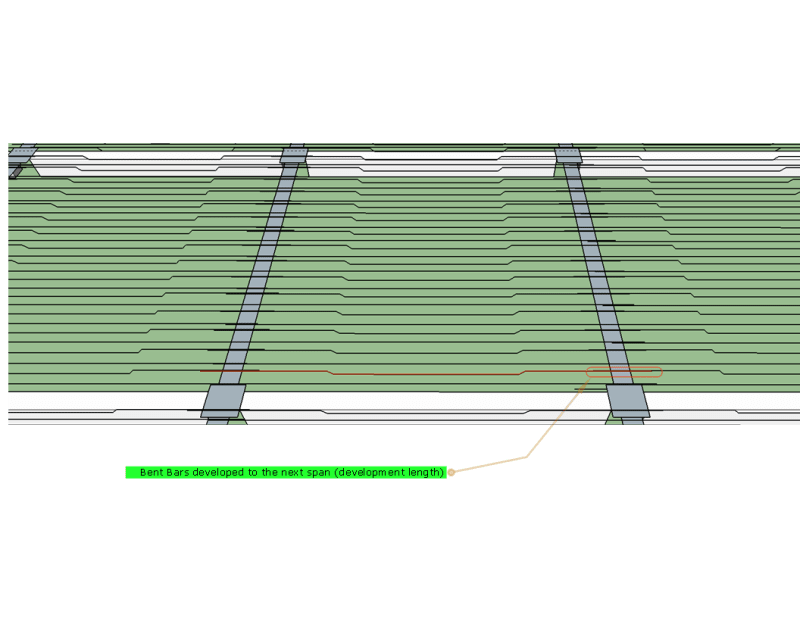Penpendrum
Civil/Environmental
I just want to clarify what is the proper detailing of a bent up rebars for the two way slab
.and I want to know the sections of the aci code that supports it.
the slab is 5 m x 5 m with a perimeter support beams with a width of 250 mm
the plan specs for the bars @ long direction is 12 mm diam @ 140 mm O.C BENT-UP ALTERNATE @ L/4
FROM FACE OF SUPPORT.
The following is my question :
1.) for the continuous slab, is it okey if I will not continue the bottom bars to the support as illustrated from bellow?
2.) for the hanger bars bars bars marked as yellow , is it required to continue from the top bar of one support?
3.) is it required for the hanger bars to be lapped(standard lapped) in it's termination to the bent up bars
4.) do we really need to bend bars with in the column strip?
6.) if the next slab spacing requires 100 mm O.C. how can we continue the bars from the 140 mm spacing? as I could see that the " bent up alternate bars " would be really hard to apply in this situation .
"also please correct my detailing if you would see something out of standards"



